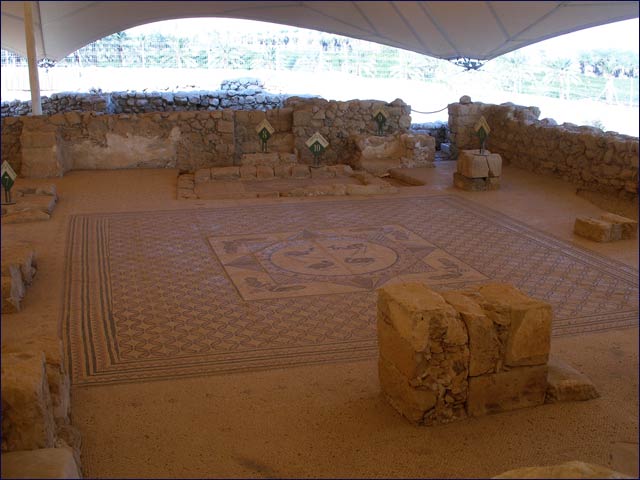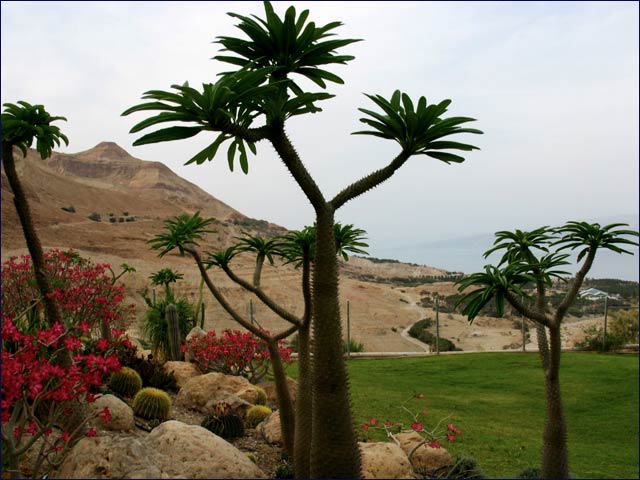By Avigayil Kadesh
First settled some 5,000 years ago, this Judean Desert oasis is where the young biblical David took refuge from mad King Saul and Jewish rebels from Jerusalem hid out from Roman oppressors. Persimmon oil, rare perfumes and highly prized dates have been among its produce for millennia.
Nahal David waterfall at Ein Gedi
Surrounded by majestic cliffs and very close to the
Masada National Park, Ein Gedi is one side of a popular tourism triangle for people who like to hike, sunbathe, bird-watch, explore archeology or relax in a hot-spring spa.
Israeli tour guide
Mordechai Weiss suggests beginning a tour of Ein Gedi with an hour-long hike to the lower David Stream (Nahal David), which offers a scenic vantage point.
“It's an easy uphill walk with steps and handrails to the waterfalls and water holes,” says Weiss.
“It’s the most accessible hike in Ein Gedi, even in a wheelchair at its very beginning. There are a number of stations along the way to stop and catch your breath or to take a dip in the water. And be on the lookout for the ever-popular mountain goats and hyraxes.”
Archeological finds
The David and Arugot streams flow year-round through deep canyons surrounded by lush vegetation, in sharp contrast to the surrounding desert.
“My personal favorite is the walk to the Arugot,” says Weiss. This is one of the largest riverbeds in the Judean Desert, starting near Jerusalem and ending at the Dead Sea.
“The trail leads to the Hidden Waterfall and back. But you need to set aside more time for this hike.” It will take two to four hours, depending which route you choose.
Weiss advises would-be visitors to time their excursion carefully. “The park does not allow for entry already one hour before closing time, and you are probably traveling to the area from a distance,” he explains. “The lower David Trail offers you more flexibility with your time, with a number of waterfall and swimming options available after only a few minutes of hiking.”
On the lower David, you can see the remains of a synagogue dating back to Talmudic times 1,600 years ago. Inside is a preserved mosaic floor with colorful depictions of desert animals similar to those you can still see today.

This synagogue dates back 1,600 years
Those with more time and lots of energy may opt to hike Ein Gedi’s upper David Trail, which begins at the David Stream and continues up to the Shulamit Spring, passing the Dodim Cave and the Ein Gedi Spring, along with a fourth-century BCE Chalcolithic temple.
The nature reserve is open weekdays in summer from 8 am to 5 pm and in winter until 4 pm; Saturday and Sunday from 9:30 am to 3:30 pm and on Fridays from 8:30 am to 2:30 pm.
Where to stay
If your Ein Gedi exploration will include an overnight stay, you may want to book a room at one of the Dead Sea’s many hotels in the Ein Bokek area right on the beach, south of Ein Gedi.
Kibbutz Ein Gedi, founded in 1953, has a botanical garden planted with plants and trees indigenous to Israel -- such as olive, pomegranate and fig trees -- alongside tropical transplants from Madagascar, Australia and Africa. An aromatic garden is filled with biblical perfumed and medicinal plants.

Ein Gedi Botanical Gardens
In the area, there are other significant sites, such as the
Einot Tzukim Nature Reserve, which boasts an ancient farmhouse from Roman times, and the Qumran caves where the
Second Temple-era Dead Sea Scrolls were discovered in the 1940s and 1950s. You can hire a tour guide to take you through this rocky area in a jeep.
The most popular paid tourist site in all of Israel, Masada National Park, is Ein Gedi’s near neighbor. You can get up to the top of this famous plateau via cable car or on foot. At the top you’ll see the restored remains of a fortress town where a band of Jewish men, women and children held out against masses of conquering Roman troops during the first century. They ultimately chose mass suicide rather than enslavement, and so Masada has become a symbol of heroism.
Here also is the
Yigal Yadin Masada Museum, opened in 2007 to highlight the finds of Yadin, a preeminent Israeli archeologist. The museum is divided into nine spaces by archaeological and historical content. It features three-dimensional scenes, sculpted figures and architectural elements made to conform as much as possible to real finds of this period in history.
All photos courtesy of the Israel Tourism Ministry